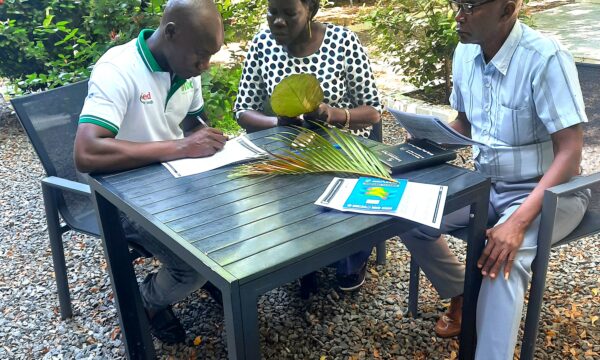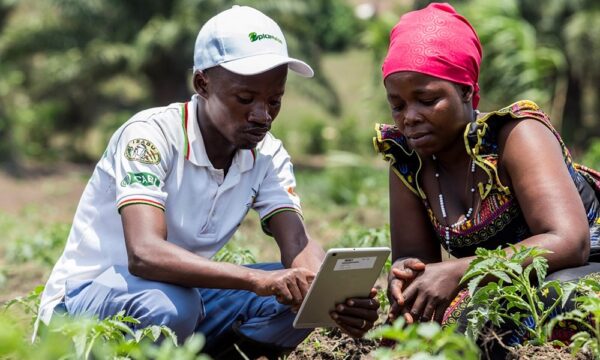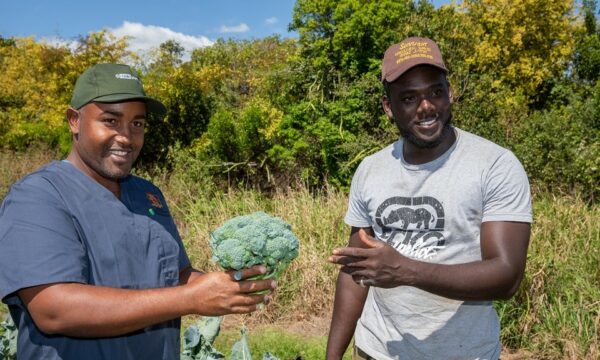
Plant clinic data collected by Plantwise countries in East Africa has corroborated a statement from the International Maize and Wheat Improvement Center (CIMMYT) which said maize lethal necrosis disease (MLN) is “under control but not eradicated”.
MLN is a destructive disease of maize caused by co-infection of Maize chlorotic mottle virus (MCMV) and any virus in the Potyvidrae family. Symptoms include mottling on leaves, leaf necrosis, stunted growth, dead heart, poor seed set, premature aging and death of plants. Early infection can result in total yield losses, further compounded by the possible disappearance of symptoms during the growing season, making disease detection more difficult. The disease can spread via insects such as thrips, aphids and beetles, as well as through seed contamination.
Originating in the Americas, MLN was first reported in Africa in Kenya in 2011. During 2012-2014, the disease spread rapidly throughout East Africa, threatening the livelihoods and food security of farmers in the region, as well as those in as yet unaffected areas across Africa. The effects of MLN are severe, as coupled with the losses of crops caused by the disease, trade is often embargoed between locations which are known to harbour infection and those that aren’t.
The table below demonstrates estimated current and future losses attributed to MLN in Africa. The potential scale of the destruction inspired a multi-organisational and -national response to prevent the disease taking hold in Africa, including efforts by CIMMYT, CGIAR, USAID, the Bill and Melinda Gates Foundation, and CABI to name a few.

Table of estimated costs of MLN in Sub-Saharan East Africa taken from Redinbaugh and Stewart, 2018. Data adapted from Pratt et al., 2017. The table demonstrates significant losses in millions of dollars for farmers, many of which depend on maize as staple crop.
Due to the rapid detection of MLN and the response of the countries involved, it has been reported that the disease is under control but not eradicated. “We have managed to contain the spread within the region but continue to monitor its movements” says Dr Prasanna, Director of CIMMYT’s Global Maize Program. This comes after survey work conducted in eastern and southern Africa in 2018, which showed no MLN in Malawi, Mozambique, Zimbabwe and Zambia, and incidence in Kenya is falling.
CABI has confirmed this by using Plantwise plant clinic data with no records of MLN in Malawi, Mozambique or Zambia. Diagnosis of MLN has indeed seen a fall in Kenya since 2014, despite more maize plants being seen in plant clinics than in previous years. This, along with the survey results, demonstrates the success of the governments, farmers and research institutions in Kenya to diminish the impact of MLN. Quarantining maize from infected regions; crop rotation; use of certified, clean seeds and hybrid, tolerant plants; stringent monitoring; and insecticide application to reduce transmission by insects were employed to minimise spread in Kenya.

Presence of maize records and MLN diagnoses within clinics in Kenya from 2011-2018. Plant clinic data suggests a decrease in incidence of MLN, despite a growing number of maize plants being seen by plant doctors.
Due to the potential rapid emergence of the disease, it can be “difficult to predict where it will be spotted next” claims Dr Prasanna, “hence the need to intensify awareness among farmers”. CABI Plantwise clinics are one of the ways this message has been shared, and a way of detecting new areas of the disease. In fact, MLN was first discovered in Rwanda when it was brought into a clinic. Materials for farmers, such as this flyer from CIMMYT and the CABI factsheets distributed at clinics are another way to increase awareness and vigilance. When plant doctors give advice at plant clinics, they select a “recommendation type” for that advice.

Relative numbers of different recommendation types given by plant doctors in response to MLN. The recommendation types align with current advisory guidelines prescribed by all the major organisations working with the disease
The majority of the advice was “cultural”, which is mostly delivering factsheets to farmers, helping to spread awareness and circulate the most current advice from relevant organisations on controlling the disease. The next most common recommendation was insecticide; promoted to prevent transmission, followed by monitoring and then the use of resistant varieties. The latter has been the subject of much research, and there are now seven hybrid, resistant varieties in Kenya.
As well as plant clinics helping in detecting and controlling the spread of emerging diseases, the resulting data collected can also be extremely useful to ensure surveillance of established diseases. When used in conjunction with data produced by other organisations, such as CIMMYT and CABI, it can help to substantiate these findings, as has been seen here; survey data from CIMMYT has been validated by the diagnoses being delivered in clinic, providing more depth and clarity to the picture being seen on the ground.
Although the picture at the moment is looking very positive, “absence of proof is not proof of absence”. The successes of the MLN interventions can’t lead to complacency. According to CIMMYT, the disease has spread to new areas in Uganda. Farmers, CABI, governments and other organisations must keep up efforts to monitor and control MLN in Africa to minimise the effects on livelihoods throughout the continent.
Useful information:
- MLN information portal
- Maize Lethal Necrosis: An Emerging, Synergistic Viral Disease, 2018
- First Report of MLN in Kenya, 2012
- Plantwise Factsheet and PMDG
- Maize Lethal Necrosis (MLN), an Emerging Threat to Maize-Based Food Security in Sub-Saharan Africa, 2015
- First Report of MLN in Rwanda, 2014
- Economic impacts of invasive alien species on African smallholder livelihoods, Pratt et al., 2017
Data correct as of 22/03/2019. Data analysed from 01/01/2011- 01/01/2019
1 Comment
Leave a Reply
Related News & Blogs
Plant clinics showcased at Harvest Money Expo in Uganda to help empower the country’s young smallholder farmers
The CABI-led PlantwisePlus programme showcased its plant clinics at the Harvest Money Expo in Uganda to help empower the country’s young smallholder farmers to grow more and lose less to potentially devastating crop pests and diseases. The Harvest Mone…
22 March 2024





[…] Maize lethal necrosis disease on the decline in Kenya […]